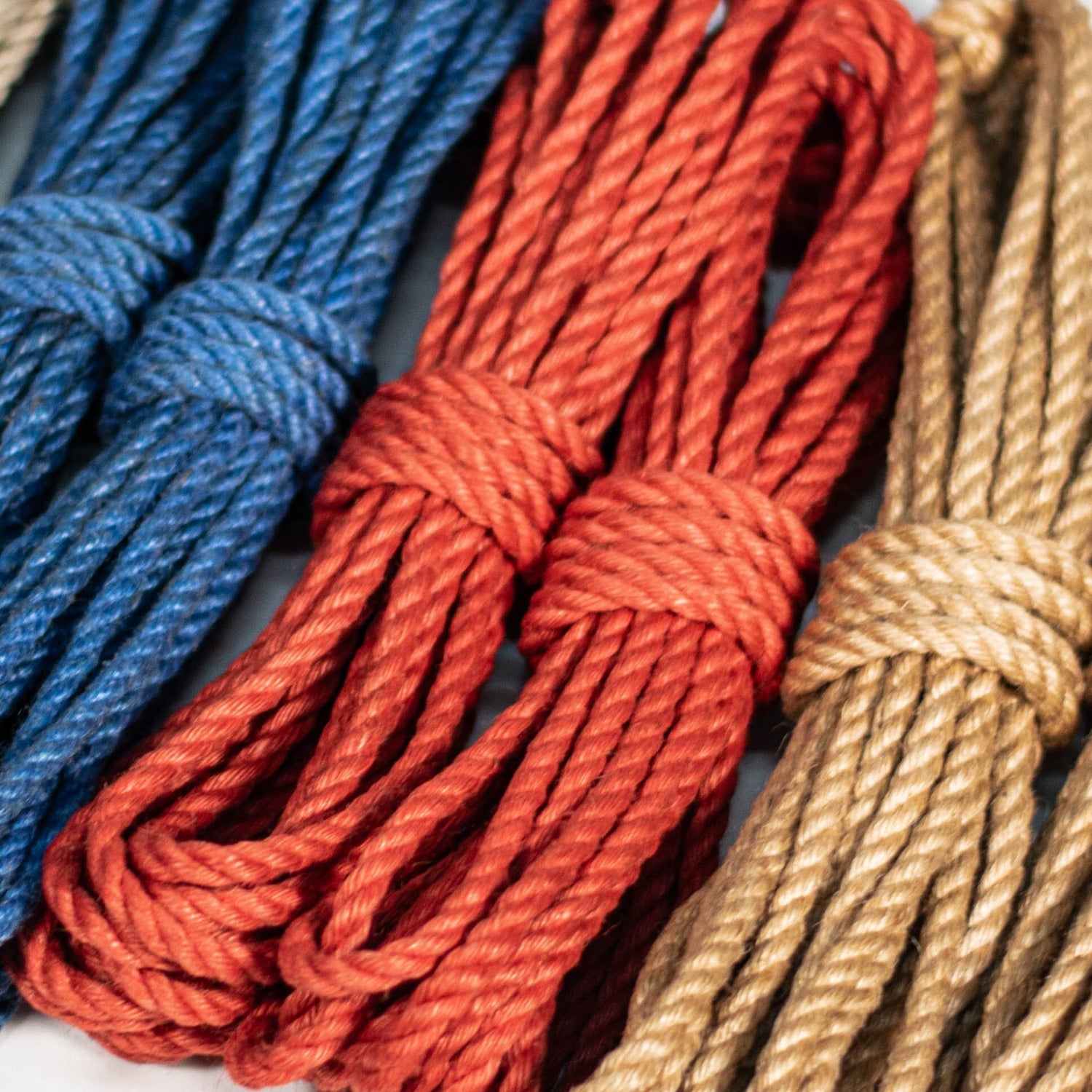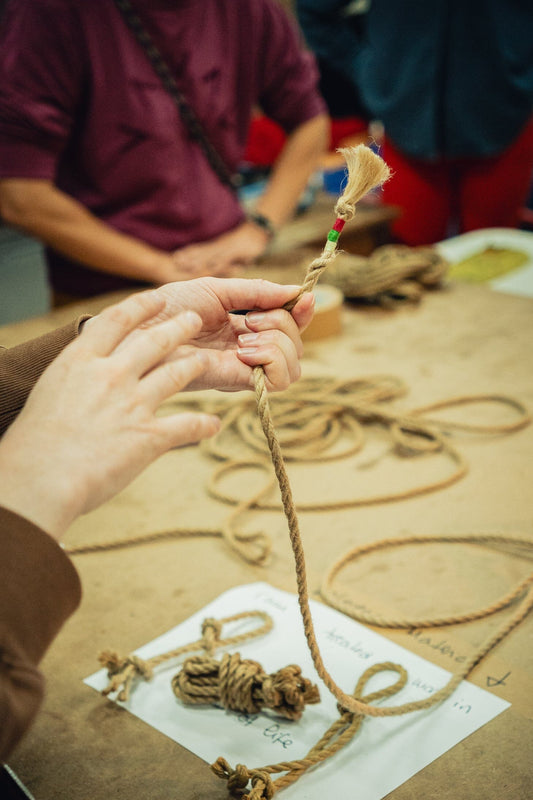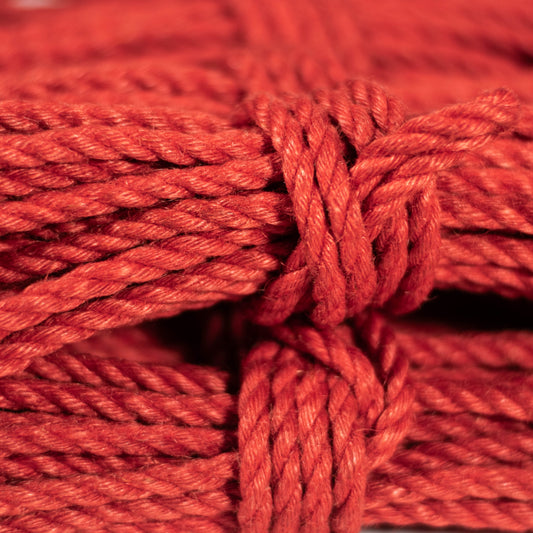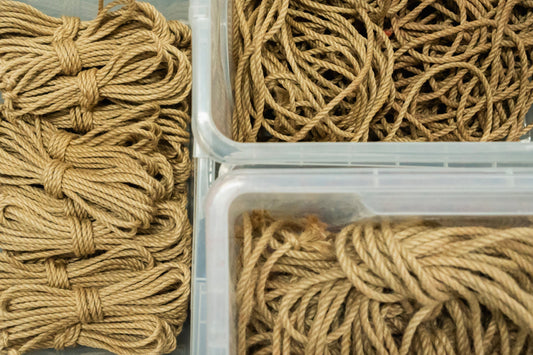When it comes to shibari, the choice of rope is as crucial as the technique itself. Among the various types available (hemp, cotton, linen etc), jute rope is highly favoured for its texture, durability, and aesthetics. However, even the best jute rope can break, and understanding why this happens is essential for both safety and performance. In this post, we will explore the factors that lead to the breaking of jute rope, especially in the context of shibari.
1. Material Properties of Jute
Jute is a natural fibre derived from the stem of the jute plant. It's biodegradable, relatively inexpensive, and has a low extensibility, which means it does not stretch much under tension. This low stretchability makes jute ropes highly sensitive to sudden forces, which can cause them to snap if not handled correctly.
For this reason, when practicing this style of tying, we advise against performing dead-lifts and drop lifts using single lines. Instead, we incorporate numerous redundancies such as multiple uplines, safety lines, and gradual lifting and lowering. We also employ bight protection techniques and, occasionally, the use of carabiners to enhance safety.
2. Wear and Tear
Regular use of jute rope in shibari can lead to wear and tear over time. The friction caused by rope handling, regular frictioning, and the pressure exerted by bodies on suspension lines can degrade the fibres. Here's what typically happens:
-
Fiber Fraying: Jute fibres can begin to fray from continuous rubbing and frictioning. This fraying weakens the structural integrity of the rope.
-
Compression Damage: Tight frictions and knots compress the fibres and reduce their ability to bear load, making them prone to breaking under less strain than a new rope.

3. Moisture and Environmental Effects
Jute absorbs water, which can be a double-edged sword. While slight moisture can make the rope more pliable and easier to work with, too much moisture can lead to rot, mold, or mildew, all of which weaken the fibres. Jute ropes require oiling to maintain their strength and flexibility (as well as to repel water), which are essential for both safety and functionality. Jute is a natural fibre that, while durable, is prone to drying out and becoming brittle over time. Oiling the rope helps preserve its natural fibres, reducing the risk of fraying and breaking under tension.
Yon can read more about oils, waxes and maintenance of jute here.
4. How to Spot Vulnerable Jute Rope
It's important for Shibari practitioners to regularly inspect their ropes for signs of damage. Here are a few indicators:
-
Visual Inspection: Look for obvious signs of wear such as frayed fibres, inconsistent thickness, or discolouration.
-
Flexibility Test: Bend the rope in an arc and watch for cracks or splits. A healthy rope should bend smoothly.
-
Squeeze Test: Compress the rope along its length. Damaged areas might feel softer or more compressible.

5. Preventing Breakage
To minimise the risk of breaking your jute rope, consider the following tips:
-
Proper Storage: Store jute ropes in a cool, dry environment away from direct sunlight.
-
Regular Maintenance: Use rope conditioners designed for jute to keep the fibres supple and strong.
- Proper Handling: Avoid pushing, excessive pulling or yanking on the rope, which can strain the fibres suddenly.
Conclusion
Understanding how and why jute rope breaks is crucial for shibari practitioners. By choosing the right materials, performing regular maintenance, and being mindful of how the rope is handled, you can significantly extend the life of your Shibari ropes and ensure safer sessions. Whether you're a beginner or an experienced practitioner, respecting the material limits of jute will enhance both the pleasure and technique in your shibari practice.






